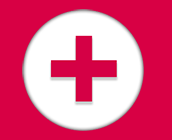Career Profile: Computed Tomography Career
Computed Tomography professionals use specialized equipment known as computerized tomography (CT) scanners to capture cross-section images of a patient’s organs or tissues. Scans captured by Computed Tomography professionals are used by physicians and care teams to diagnose and treat patient medical issues.
Computed Tomography professionals are most commonly employed in hospitals, clinics and outpatient facilities.
What Does a Computed Tomography Professional Do?
Working with radiologists and a larger patient care team, Computed Tomography professionals conduct diagnostic image scans of specific parts of the body. The sophisticated capabilities of CT scanners allow Computed Tomography professionals to create 360-degree images of organs and tissues and cross-sectional views of a patient’s body. The detail offered in these images is crucial to the diagnostic process.
Computed Tomography professionals are responsible for a wide range of tasks, including:
- Maintaining and managing CT scanning equipment
- Controlling and monitoring CT scanning equipment
- Evaluating CT scans to ensure accuracy and technical quality
- Labeling, collating and recording patient scans
- Maintaining detailed patient records
- Translating and executing imaging requests from patient care teams
- Providing support and information to patients
- Assisting radiologists with scanning procedures
- Dispensing oral or intravenous contrast medium when required
The efficient and accurate execution of these tasks is vital to the delivery of quality patient care, and to the care team’s efforts to diagnose and treat medical conditions.
What Certifications or Degrees Do I Need to Become a Computed Tomography professional?
Many employers require Computed Tomography professionals to hold an associate’s degree in radiology, sonography or nuclear medicine technology. Others may require candidates to complete a certification course offered by an accredited college, technical school or vocational school.
Most employers prefer Computed Tomography professionals to obtain certification with a professional organization such as the Nuclear Medicine Technology Certification Board (NMTCB) or the American Registry of Radiologic Technologists (ARRT).
Computed Tomography professionals must also obtain licensure from the states in which they live and work.
What Is the Employment Outlook for Computed Tomography?
According to the United States Department of Labor Bureau of Labor Statistics, the median salary for individuals working in the radiologic or Computed Tomography field was $58,960 in May 2016.
A 2014 study of employment within the medical field revealed that 37,100 Computed Tomography professionals were employed throughout the United States. The same survey projects the number of Computed Tomography positions to increase by as much as 28 percent by 2024.
Become a Computed Tomography professional. Apply Today.
In as little as four weeks, you can gain the knowledge and training needed to begin a rewarding career in Computed Tomography. Apply for our Computed Tomography certificate program today.
More on Computed Tomography



